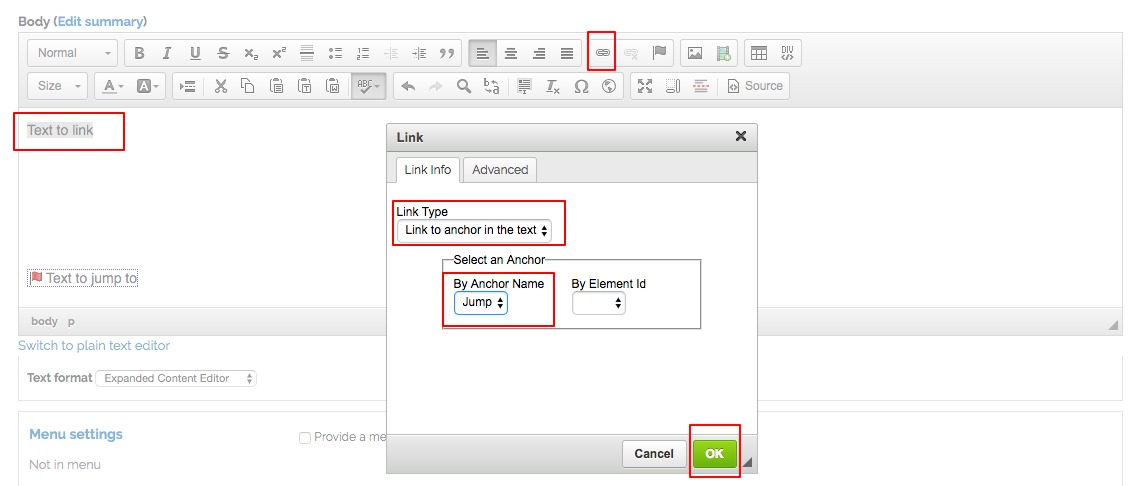Links
There are four different types of links available, all by clicking the Link button in the content editor.
- Internal path — Link to other pages within your site
- URL — Link to other websites and link to PDF files and other documents
- Link to an anchor in the text — Establish a link to another part of the same page
- Email — Link to a email address, which upon clicking launches a new email message
To create links:
Highlight the text you want to link to then click the Link button in the content editor. Next select the type of link you need from the Link Type dropdown menu. Then click OK.

Internal Path Links
Select Internal Path from the Link Type dropdown menu.
Begin typing the Title of the page you wish to link to in the Link box. A list of likely pages will appear. Select the page you wish to link to and click OK.

URL Links
Select URL from the Link Type dropdown menu.
There are two functionalities available from the URL dialog box — establishing a link to another website and linking to a PDF or document.
To establish a link to another website: Type the URL in the URL field, then click OK.

To link to PDFs and documents please see the PDFs and Documents instructions page.
To link to an Anchor:
Linking to an anchor is a two step process.
First you create the anchor name. Then you create a link on the page to that anchor.
To establish an anchor name highlight the text for the anchor. Click the Flag button in the content editor. In the box that appears name the anchor. Then click OK.

The second step is to create a link to the anchor name.
To do that highlight the text you wish to use as the link. Click the Link button in the content editor. Select Link to anchor in the text from the Link Type dropdown menu. Then select the Anchor Name from the By Anchor Name dropdown menu. Finally click OK.

To create an email link:
Select Email from the Link Type dropdown menu. Enter a valid email address and optionally a Message Subject and Message Body. Then click OK.

Best Practices
Name links so that:
- Users can scan link text quickly to navigate to the page they're looking for
- Search engines can index links and their landing pages correctly, thus improving search engine results
- Sight-impaired users can use screen readers to navigate the site effectively
- Phrase links so that it's obvious where the link goes.
- Click here or similar phrases should not be used as linked text, nor should a URL be the link text
Targets & opening new windows/tabs:
- Open links in the same window/tab so that the user is not confused by unexpected browser behavior
Email links:
- The link text of Email links should be the email address, not the person or department's name
